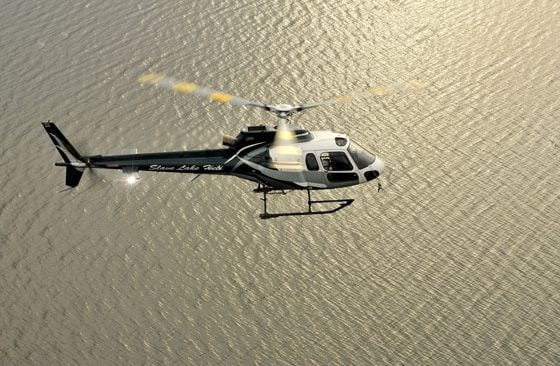
StandardAero and Thales are teaming to bring an advanced autopilot for light helicopters, such as this Airbus AS350, to market. Photo: Airbus
StandardAero and Thales recently announced a teaming agreement for the development and certification of an advanced autopilot system for Airbus AS350 and other light helicopters.
The companies said that they are targeting the AS350 as the roll-out platform.
“Based on extensive autopilot experience, Thales has incorporated the features and safety design architecture usually found in multi-engine Instrument Flight Rules (IFR) helicopters into its compact autopilot, now available to light helicopter platforms,” the companies said. “Thales is offering a lightweight four-axis solution that enables permanent aircraft stabilization, eliminating the traditional dedicated flight control computer. The autopilot can also fully control the helicopter from initial hover to coupled approach and position-hold.”
Last fall, the U.S. Helicopter Safety Team (UHST) encouraged industry to develop and install stability augmentation systems (SAS) and/or simple autopilots in light helicopters as part of USHST’s effort to reduce the number of fatal rotorcraft accidents.
Christian Bardot, Thales vice president of helicopter avionics, said that Thales’ compact autopilot “capitalizes on the proven levels of safety and reliability that are already deployed on larger air transport platforms.”
“We will use this technology and experience as the basis for a cutting-edge, timely solution, bringing light helicopters into a new era,” he said.
Elvis Moniz, StandardAero’s vice president of business development for airframes and avionics solutions, said that the advanced autopilot is part of the company’s SAFECRAFT program to gain certification of “innovative, transformational safety technologies that address many of the most common concerns our customers face, such as pilot fatigue and entry into inadvertent instrument meteorological conditions (IMC) that can often result in LOC-I and CFIT [loss of control-inflight and controlled flight into terrain] situations.”
“These risks are well known throughout the industry by owners, operators and the pilots flying these machines, yet until now, we haven’t had the right technology available for this segment to adequately address the threat head on,” he said.